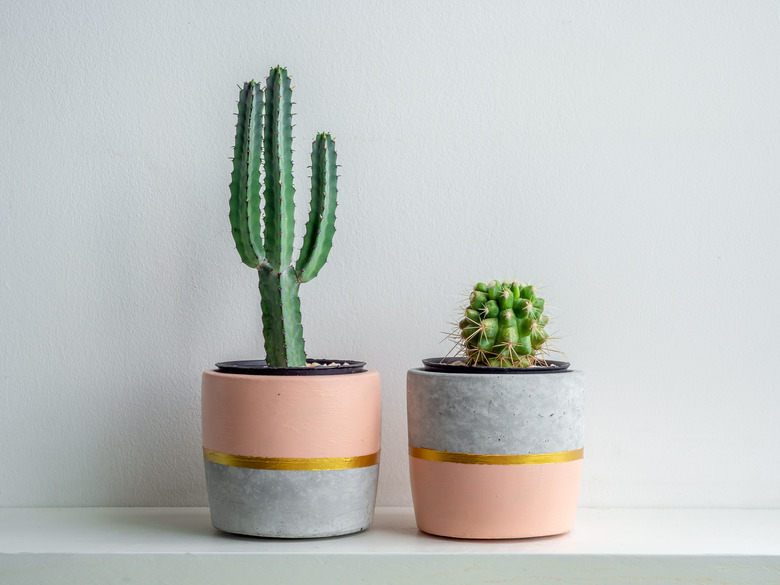What Causes A Cactus To Lean?
We may receive a commission on purchases made from links.
A cactus that has been growing upright but is now leaning like the Tower of Pisa should be a concern for the gardener, whether the plant is growing indoors or outside. The plant may be perfectly healthy, or leaning may indicate that the plant is stressed. Observing your cactus carefully can help you determine why the plant is leaning. If a problem is detected early, solutions are available that may save the cactus.
Tip
A leaning cactus that was previously growing upright may be a sign that the plant is ill, damaged or responding naturally to environmental conditions.
Growing Toward the Sunlight
Growing Toward the Sunlight
Even if your cactus is planted in full sun, it may lean. Plants naturally grow toward the sunlight. The golden barrel cactus (Echinocactus grusonii, USDA zones 9-11) grows southward toward the sun so much that it practically lies over on one side. If the cactus is otherwise healthy, this is not a danger.
However, if a cactus planted in partial shade is leaning, it may need more sunlight. A cactus in this condition will look sickly and have weak, flimsy stems that are yellow-green. The plant should gradually be exposed to stronger sunlight to prevent sunburn.
Improper Planting Issues
Improper Planting Issues
If the cactus is leaning from the ground, it may be loosely planted in the soil. Improper watering may be the reason. After watering a cactus, the soil must be allowed to completely dry out before watering again. Watering too frequently prevents the soil from hardening around the base of the cactus and causes the soil to loosen.
Provided there is no root rot, either transplanting the cactus to dry soil or packing more dirt around it is a solution. Also, adding a layer of small rocks or gravel on the surface can help to stabilize the cactus.
Problems With Rot
Problems With Rot
Rot is caused by fungi and bacteria growing on the plant. The most common reason for rot is watering the cactus too often. The infected spot will have a watery, slimy, black appearance. Rot begins at the base of the cactus and works its way to the top.
Rotting plants start to lean, then collapse and die. If rot is detected early, dig up the cactus and replant it on dry soil. Otherwise, remove the cactus from the soil, and cut the healthy top away from the diseased part. Allow the top to dry and dust the cut surface with a fungicide before replanting it in sandy soil.
Insect Problems on a Cactus
Insect Problems on a Cactus
Insects eating the stem of the cactus can weaken the plant and cause it to lean. A plant infested with mealybugs will stop growing and take on a sickly, deformed appearance. Mealy bugs should be removed with tweezers or a cotton swab dipped in rubbing alcohol.
Ants nesting at the base of the cactus eat away at the stem causing it to lean and eventually fall over. Wash away the ants with a strong, lukewarm stream of water. A cactus weakened by insects may develop fungal rot and will die if not treated.
